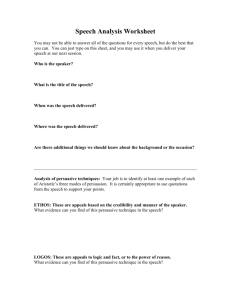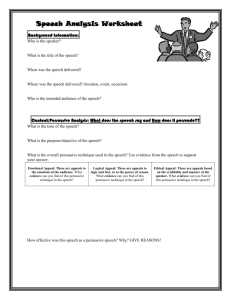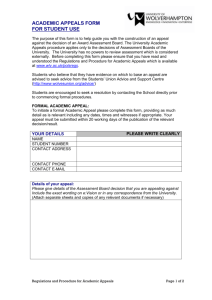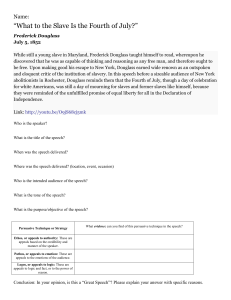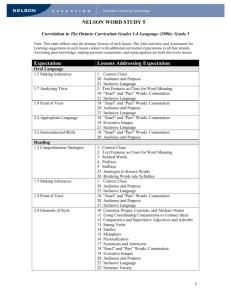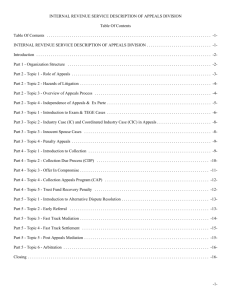Persuasive Techniques (Notes)
advertisement
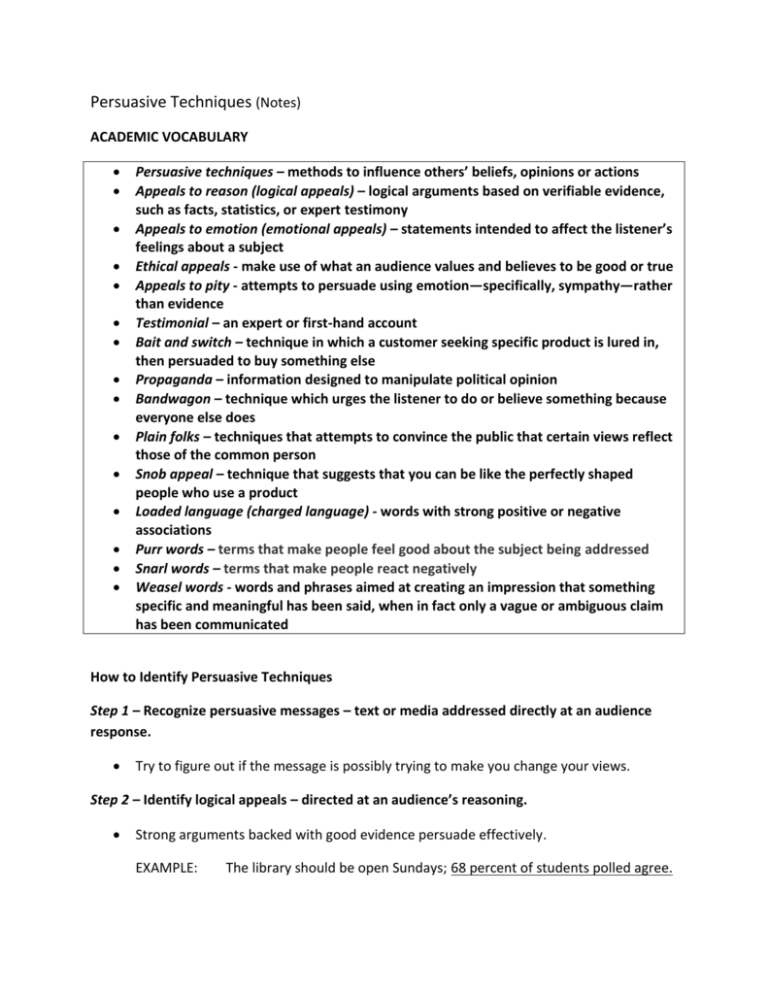
Persuasive Techniques (Notes) ACADEMIC VOCABULARY Persuasive techniques – methods to influence others’ beliefs, opinions or actions Appeals to reason (logical appeals) – logical arguments based on verifiable evidence, such as facts, statistics, or expert testimony Appeals to emotion (emotional appeals) – statements intended to affect the listener’s feelings about a subject Ethical appeals - make use of what an audience values and believes to be good or true Appeals to pity - attempts to persuade using emotion—specifically, sympathy—rather than evidence Testimonial – an expert or first-hand account Bait and switch – technique in which a customer seeking specific product is lured in, then persuaded to buy something else Propaganda – information designed to manipulate political opinion Bandwagon – technique which urges the listener to do or believe something because everyone else does Plain folks – techniques that attempts to convince the public that certain views reflect those of the common person Snob appeal – technique that suggests that you can be like the perfectly shaped people who use a product Loaded language (charged language) - words with strong positive or negative associations Purr words – terms that make people feel good about the subject being addressed Snarl words – terms that make people react negatively Weasel words - words and phrases aimed at creating an impression that something specific and meaningful has been said, when in fact only a vague or ambiguous claim has been communicated How to Identify Persuasive Techniques Step 1 – Recognize persuasive messages – text or media addressed directly at an audience response. Try to figure out if the message is possibly trying to make you change your views. Step 2 – Identify logical appeals – directed at an audience’s reasoning. Strong arguments backed with good evidence persuade effectively. EXAMPLE: The library should be open Sundays; 68 percent of students polled agree. Step 3 – Identify ethical appeals – directed at values. EXAMPLE: Vote for the Ozone Act to help protect the earth. Step 4 – Identify emotional appeals – aimed at strong feelings. Appeals to fear, anger, pity, and vanity can strengthen a message, but can also disguise poor reasoning. Step 5 – Identify appeals by association – linked to an authority. The message may be delivered as a testimonial. EXAMPLES: Appeal to loyalty – Show your commitment – buy locally grown fruits. Plain folks appeal – The dentists at West Group are your friends and neighbors. Bandwagon appeal – Millions of teenagers use Suds-o Soap. Shouldn’t you? Snob appeal: eat Lola’s lo-fat, hi-flavor cheese – You deserve the best. Appeal to authority – As a leading engineer, I recommend Ready-Able toasters. Transfer – One sip of Ocean Ade and you’ll feel you’re at the beach. Step 6 – Identify loaded language. Words that manipulate may be extremely positive (purr or glittering), extremely negative (snarl), or extremely vague (weasel). EXAMPLES Purr words: The fresh and delicious taste of Dazzle Sprinkles is unforgettable. Snarl words: My opponent in the mayor’s race is sneaky and unreliable. Weasel words: Jackie’s Shoe Repair will make your boots almost like new. Step 7 – Evaluate the message. Think about the writer’s purpose, perspective, and bias. Ask yourself: Are the claims supported by facts? Do loaded words send a deceptive message?

